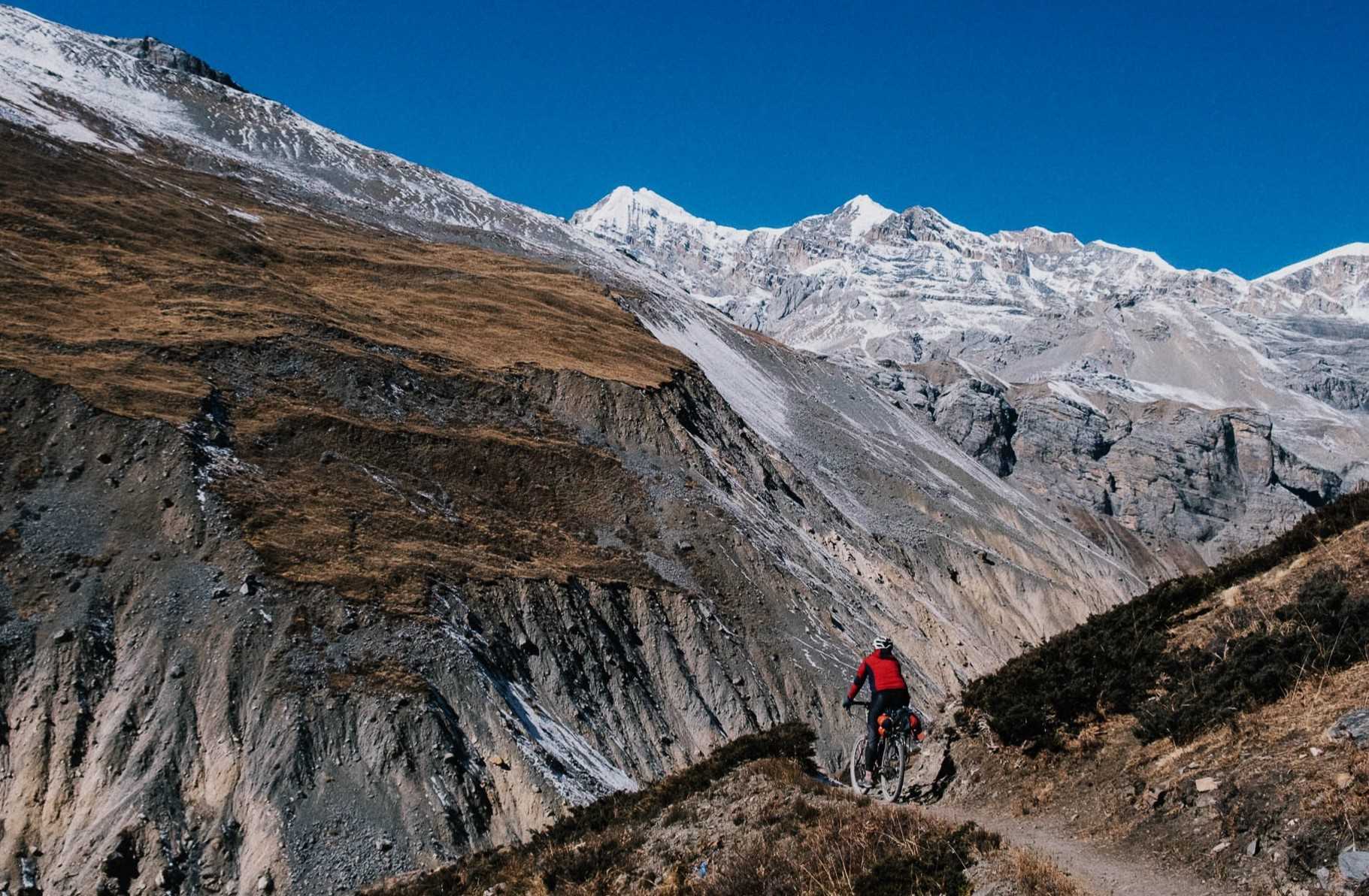
Is the Annapurna Circuit worth the trek? Absolutely! This legendary trail in Nepal offers breathtaking views, cultural encounters, and a sense of adventure that few places can match. Imagine walking through lush forests, crossing suspension bridges, and gazing at towering peaks like Annapurna and Dhaulagiri. The journey takes you through diverse landscapes, from subtropical jungles to arid high-altitude deserts. Along the way, you'll meet friendly locals in traditional villages, each with its own unique charm. The circuit's highlight is the Thorong La Pass, standing at a staggering 5,416 meters. It's a challenging climb, but the panoramic views make every step worthwhile. Whether you're an experienced hiker or a curious traveler, the Annapurna Circuit promises an unforgettable experience filled with natural beauty and cultural richness. Pack your bags, lace up your boots, and get ready for an adventure of a lifetime!
Key Takeaways:
- The Annapurna Circuit is a famous trekking route in Nepal, offering stunning views and diverse landscapes. It takes 15-20 days to complete and passes through various ethnic groups, providing a unique cultural experience.
- Trekkers should prepare for varying weather conditions, altitude sickness, and changes in infrastructure along the Annapurna Circuit. Hiring a local guide, packing efficiently, and respecting local customs are essential for a safe and enjoyable journey.
What is the Annapurna Circuit?
The Annapurna Circuit is a famous trekking route in Nepal, known for its stunning views and diverse landscapes. It offers trekkers a chance to experience the beauty of the Himalayas and the rich culture of the region.
-
The trek circles the Annapurna Massif, a collection of peaks over 8,000 meters high, including Annapurna I, the 10th highest mountain in the world.
-
This route covers approximately 160-230 kilometers, depending on the starting and ending points chosen by trekkers.
-
The trek typically takes 15-20 days to complete, allowing for acclimatization and exploration of the area.
Why is the Annapurna Circuit Popular?
Many trekkers are drawn to the Annapurna Circuit for its breathtaking scenery and cultural experiences. The route offers a unique blend of natural beauty and human history.
-
The trail passes through a variety of landscapes, from subtropical forests to alpine meadows and high-altitude deserts.
-
Trekkers encounter diverse ethnic groups, including Gurung, Thakali, and Manangis, each with their own distinct cultures and traditions.
-
The circuit includes the Thorong La Pass, one of the highest trekking passes in the world at 5,416 meters.
What Should Trekkers Expect on the Annapurna Circuit?
Preparation is key for anyone planning to trek the Annapurna Circuit. Understanding what to expect can help ensure a safe and enjoyable journey.
-
Weather conditions can vary greatly, with temperatures ranging from hot and humid in lower regions to freezing cold at higher altitudes.
-
Accommodation is available in teahouses along the route, providing basic lodging and meals for trekkers.
-
Altitude sickness is a risk, so acclimatization days are important to help the body adjust to higher elevations.
How Has the Annapurna Circuit Changed Over Time?
The Annapurna Circuit has evolved significantly since it first became popular with trekkers. Changes in infrastructure and tourism have impacted the experience.
-
Roads have been constructed along parts of the trail, making some sections accessible by vehicle and altering the traditional trekking experience.
-
Increased tourism has led to more developed facilities, but also concerns about environmental impact and cultural preservation.
-
Efforts are being made to promote sustainable tourism practices to protect the region's natural and cultural heritage.
What Makes the Annapurna Circuit Unique?
The Annapurna Circuit stands out among trekking routes for several reasons. Its combination of natural wonders and cultural richness offers a truly unique adventure.
-
The trek provides panoramic views of some of the world's highest peaks, including Dhaulagiri, Manaslu, and Machapuchare.
-
Trekkers can visit ancient monasteries, temples, and traditional villages, gaining insight into the spiritual and cultural life of the region.
-
The circuit offers opportunities for side trips to places like Tilicho Lake, one of the highest lakes in the world.
What Are Some Tips for Trekking the Annapurna Circuit?
Preparation and awareness can enhance the trekking experience on the Annapurna Circuit. Here are some tips to keep in mind.
-
Hiring a local guide can enrich the experience by providing insights into the culture and ensuring safety on the trail.
-
Packing light but efficiently is crucial, with essentials like warm clothing, a good sleeping bag, and a reliable pair of trekking boots.
-
Respecting local customs and the environment is important, as it helps preserve the beauty and integrity of the region for future generations.
Final Thoughts on the Annapurna Circuit
The Annapurna Circuit is a trekker's paradise, offering a mix of natural beauty and cultural richness. This trail, known for its breathtaking views, takes adventurers through diverse landscapes, from lush subtropical forests to arid high-altitude deserts. Along the way, you'll encounter charming villages where you can experience the warmth of local hospitality. The circuit isn't just about physical endurance; it's also a journey through Nepal's rich traditions and history. Trekkers often find themselves captivated by the majestic peaks, including Annapurna and Dhaulagiri, which stand as silent guardians of the region. While the trek can be challenging, the rewards are immense, leaving trekkers with memories that last a lifetime. Whether you're an experienced hiker or a curious traveler, the Annapurna Circuit promises an unforgettable adventure filled with awe-inspiring moments and a deeper connection to nature and culture.
Frequently Asked Questions
Was this page helpful?
Our commitment to delivering trustworthy and engaging content is at the heart of what we do. Each fact on our site is contributed by real users like you, bringing a wealth of diverse insights and information. To ensure the highest standards of accuracy and reliability, our dedicated editors meticulously review each submission. This process guarantees that the facts we share are not only fascinating but also credible. Trust in our commitment to quality and authenticity as you explore and learn with us.
